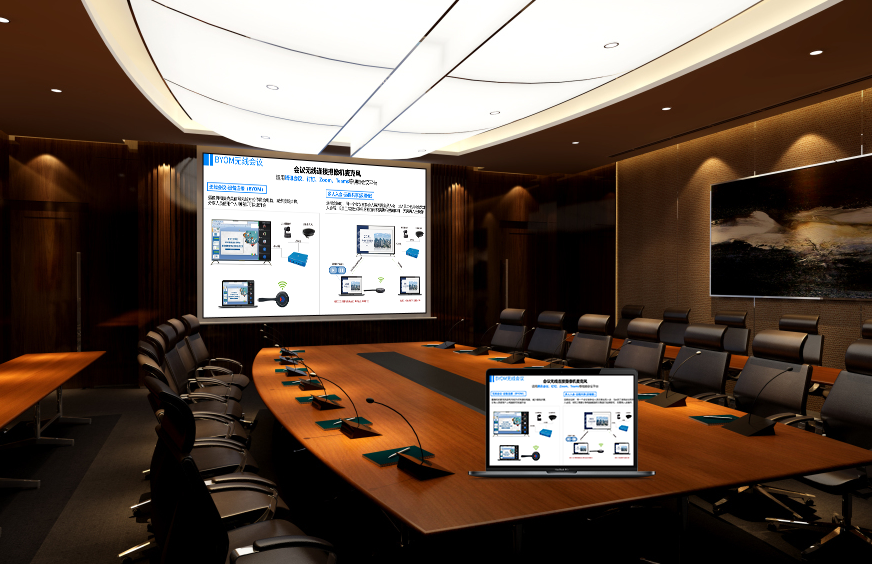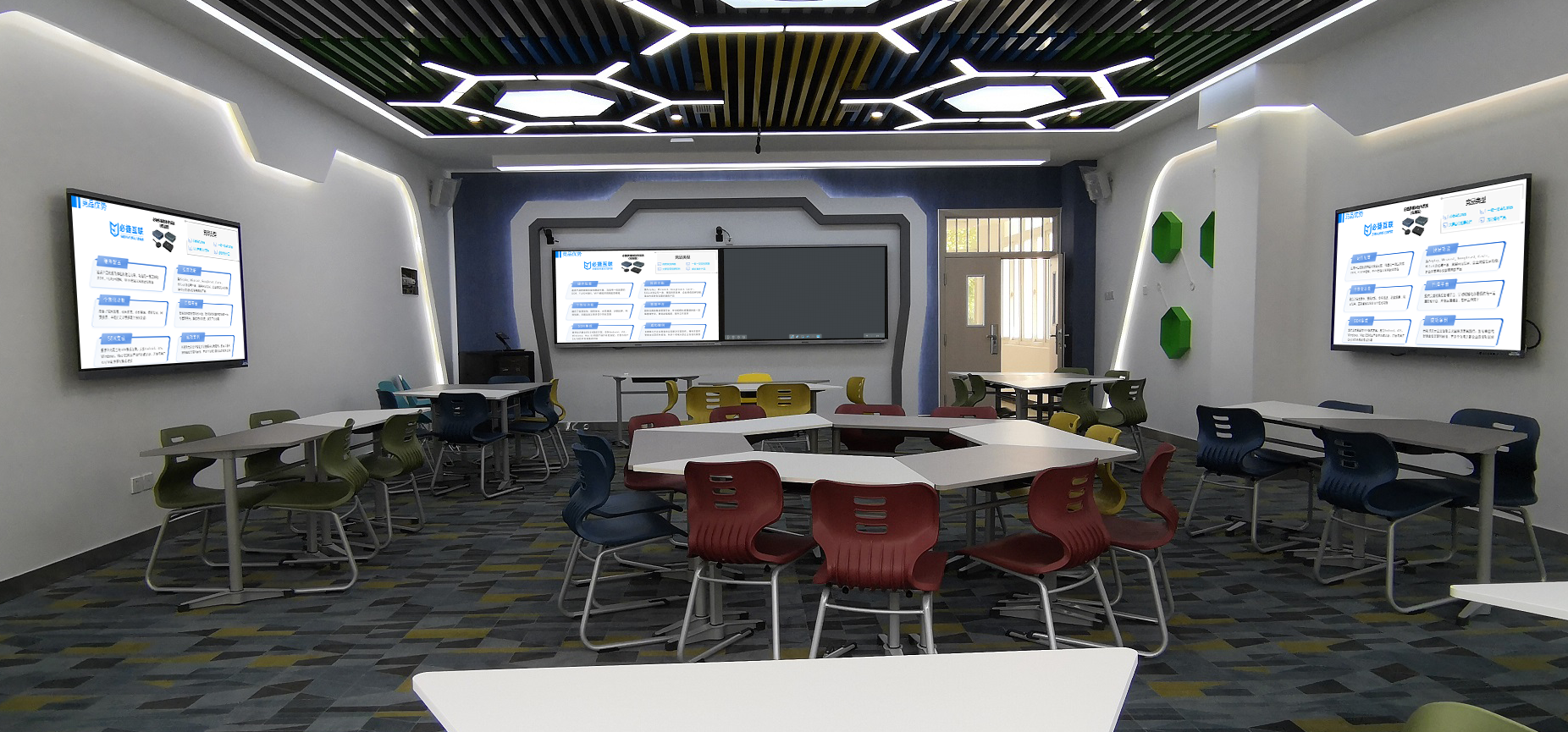Miracast: Ushering in a New Era of Wireless Screen Mirroring
In this age of continuous technological iteration, the ways devices connect are undergoing a profound transformation. Miracast, a significant technology in wireless screen mirroring, is changing how people interact in office, education, and entertainment scenarios with its outstanding features, delivering a convenient and efficient cross-screen experience.
1. Miracast Technology Explained: The Core Driver of Wireless Connectivity
Miracast is a wireless display standard established by the Wi-Fi Alliance in 2012, built upon Wi-Fi Direct technology. It allows Miracast-enabled devices, such as phones, tablets, and computers, to directly establish a peer-to-peer wireless connection with display devices (smart TVs, projectors, monitors) without the need for a wireless access point (AP). This enables simultaneous transmission of video and audio. This connection method greatly simplifies the steps for device interconnection, breaking free from the constraints of traditional wired connections.
During the screen mirroring process, the sending device (e.g., a phone) encodes and compresses its screen content and streams it via Wi-Fi Direct to the receiving device (e.g., a TV). The receiving device then decodes and displays the content. The entire process relies on a synergy of underlying technologies, including 802.11n/ac wireless transmission specifications to ensure bandwidth, WPA2 encryption for data security, and WMM technology to manage traffic and quality of service, all laying the foundation for high-quality screen mirroring.
2. Significant Advantages of Miracast
(I) Convenient Wireless Connection Experience
In a home setting, previously, projecting a phone video to a large TV screen often required complicated wiring or was limited by specific connection methods. Miracast makes this process effortlessly simple. Users just need to enable the Miracast function in their phone and TV settings. The phone then automatically searches for nearby Miracast-supported TV devices, and a single tap completes the connection. Whether sharing travel photos and videos during a weekend family gathering or when children want to play mobile games on the big screen, it happens instantly, making home entertainment more interactive and enjoyable.
In an office environment, Miracast also excels. In a meeting room, speakers no longer need to fumble for compatible HDMI cables or struggle with projector connection setups. By bringing a Miracast-enabled laptop into the meeting room, they can quickly connect to the room’s display device and clearly project content like PPTs, documents, and data reports, saving meeting preparation time, making meeting flows smoother, and boosting team collaboration efficiency.
(II) High-Definition Picture Quality and Excellent Audio Presentation
Miracast technology boasts powerful audio and video transmission capabilities, supporting high-definition video stream transmission. Common resolutions can reach 1080p Full HD, and some advanced devices can even support 4K Ultra HD resolution, ensuring crisp and sharp mirrored visuals with every detail precisely rendered. When showcasing high-definition images, playing 4K movies, or demonstrating professional design drafts, every color transition and line contour is accurately reproduced, providing users with a visual experience comparable to local playback.
In terms of audio, Miracast supports various audio formats, including common AAC, AC3, and Linear Pulse Code Modulation (LPCM), enabling 5.1 surround sound audio output to create an immersive audio environment. When watching movies at home, paired with a home theater sound system, viewers feel as if they are in a cinema, experiencing stunning sound effects. In business meetings, when explaining product demonstration videos, clear and rich audio ensures every detail is accurately conveyed to the audience.
(III) Low Latency and Real-Time Synchronization
For scenarios requiring real-time interaction, such as online education or game screen mirroring, latency is a critical factor affecting the experience. Miracast, with its optimized transmission algorithms and protocol design, controls latency to an extremely low level, achieving near real-time screen sharing. In online classrooms, teachers using tablets to project and explain courseware via Miracast see their operations almost instantly synchronized with the large screen. Students can keep up with the teacher’s pace, and interactive Q&A feedback is quick. When game enthusiasts mirror mobile games to a large TV, low latency ensures instant response to control commands, smooth character movements, and precise skill execution, greatly enhancing the competitive gaming experience.
(IV) Strong Cross-Platform Compatibility
A major outstanding advantage of Miracast is its excellent cross-platform compatibility, as it is not restricted by device brand or operating system. Whether it’s a Samsung phone or Huawei tablet running Android, a Lenovo laptop or Dell computer running Windows, or an Apple device using iOS, as long as the device supports Miracast, it can easily achieve screen mirroring connections with other devices or display equipment. In enterprises, employees using office devices of different brands and systems can all smoothly project their materials to the meeting room’s large screen via Miracast, promoting information sharing and team collaboration. In schools, students’ diverse mobile learning devices can also connect to classroom display equipment via Miracast, facilitating the presentation of learning outcomes and participation in classroom interaction.
(V) Secure and Reliable Transmission
Data security is paramount. Miracast employs encrypted transmission based on the WPA2 encryption protocol, strictly encrypting data during transmission to prevent information leakage and theft, ensuring user data security and privacy protection. Whether an enterprise is transmitting confidential business files or an individual is sharing photos or videos containing private content, Miracast’s encryption mechanism builds a secure line of defense for data transmission, giving users greater peace of mind.
3. Diverse Application Scenarios for Miracast
(I) Home Entertainment Scenarios
The home is a significant application area for Miracast. Families can gather in the living room and use Miracast to project videos and music from their phones or tablets onto the TV, enjoying the visual feast and stunning audio on the large screen, enhancing the immersive experience of watching movies or listening to music at home. When children play mobile games, mirroring to the large TV screen provides a broader view, upgrading the gaming experience. Parents can also project photos capturing moments of their children’s growth from their phones to share and relive cherished memories with family.
(II) Business Office Scenarios
In the business world, Miracast provides an efficient solution for meetings, training, and other activities. In meetings, participants can quickly project proposals and reports from their personal devices for explanation and discussion. Combined with annotation features, this makes communication more intuitive and decision-making more efficient. In training scenarios, trainers can use Miracast to synchronize training materials and demonstration videos to a large screen, facilitating learning for trainees and improving training effectiveness.
(III) Education and Teaching Scenarios
The education sector has innovated teaching models with Miracast. In the classroom, teachers can project teaching courseware and online course videos to the classroom’s large screen. With real-time annotation features, they can highlight key points and explain complex concepts, making knowledge transfer more vivid. During group discussions, students can project their group collaboration results, promoting inter-group communication and peer evaluation, enhancing classroom interactivity and student participation, and fostering students’ teamwork and expression abilities.
Miracast, with its convenient connectivity, high-definition transmission, low latency, cross-platform compatibility, and secure reliability, is widely applied across various fields such as home, office, and education. It brings numerous conveniences to people’s lives and work, becoming a key technology driving device interconnection and enhancing interactive experiences, leading the new era of wireless screen mirroring.